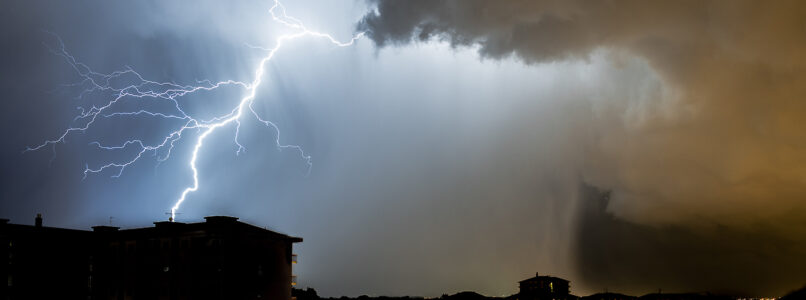Electrical Surge or Lightning?
When electrical damage occurs, determining the cause of the event is an important topic for insurance claims. Electrical damage can occur from lightning events, electrical surge from power utilities, water contact, fire events or other electrical malfunctions in the equipment.
Power outages were widespread during the winter storm in 2021. A power outage can lead to an electrical surge event when power is restored to the home. A safe method to avoid electrical surge damage to equipment is to unplug electrical appliances and devices during a power outage. Turning off circuit breakers is an additional protection to avoid electrical surge damage when power is restored. Power surge suppressors are also a cost-effective addition to electrical distribution panels. Electrical surge can be easier to classify if lightning is not present in the area.
Lightning is a naturally occurring event that can cause severe electrical damage to electrical equipment. Lightning events are well documented occurrences with data measured by the National Lightning Detection Network and other companies. Each network uses hundreds of sensors placed throughout the United States and adjacent countries to collect their data.
Lightning strikes can be classified in a few different ways. A cloud-to-ground lightning strike(stroke) is an electrical discharge between the atmosphere and the ground. A cloud-to-cloud lightning event is not typically recorded by lightning detection networks. Lightning stroke data includes the date/time, latitude/longitude, peak amplitude, polarity, and determination of whether it was a cloud-to-ground or cloud-to-cloud strike.
A search diameter between 1 to 15 miles is available for most lightning report services. Most lightning network data can detect a strike within seconds of the event occurring with a near 100 percent detection of thunderstorms. If a lightning detection network report shows no lightning in that location on the day in question that information is very accurate.
For address-specific applications of lightning data, the ability to detect a thunderstorm is not the same thing as detecting every single stroke that contacts the ground. All networks have a flash detection efficiency of 90-95 percent or greater for cloud-to-ground lightning. In general, the networks may not record the smallest magnitude lightning strikes accurately. In addition, during intense thunderstorms when there are many strikes, the sensors can be processing data and resetting after a flash when the next flash occurs, and they may not see the second flash.
All US lightning networks state their median location accuracy is about 1/8 mile. A large campus property doesn’t generally affect the interpretation of results. However, for homes in a heavily populated area the 1/8-mile radius around the reported strike point could encompass a number of separate houses. So, while there is a 95 percent chance that the lightning actually struck within approximately 1/8 mile of the pinpoint shown on the data map that might not be at the house selected as the center of the data area. This image shows a point data map with a 10-mile search radius.
The accuracy of the location is dependent upon the number of sensors that “see” the flash and their locations. The greater number of sensors that detect a stroke, the more accurately that stroke will be plotted. The fewer sensors that detect the stroke will have a larger error and this will be visualized with a more elliptical or oval shape. This is illustrated by comparing the point data on the Lightning Stroke Map above with the same data as presented on the Confidence Ellipses map below. So rather than the strike point always being within 1/8 mile of the point shown on the map in the data report, the actual strike point could be several miles away in the worst cases. These ellipses have a 99 percent of encompassing the actual strike point. This image shows the same point data map with the 10 mile search radius with the 99 percent confidence ellipses shown. Note the large size of some of the ellipses.
In summary, a lightning data report is very accurate when evaluating lightning presence in the area of interest on the date and time of interest. However, the exact location of the strike may not be as obvious as the reports present. In these cases, it is important to use information from the scene, including physical evidence and expert evaluation, to determine if lightning actually struck the property or caused damage at the property.
ANDREW LYNCH P.E., CFEI, CVFI, is an Engineer at Haag Global. He has provided expert testimony in cases involving electrical and mechanical damage. Mr. Lynch has taught numerous training sessions on Electrical Engineering to adjusters. He has also presented at various conferences and claims association meetings. Prior to joining Haag, Mr. Lynch was primarily involved in forensic engineering for many years. He also has prior experience in the design and software of robotics, oilfield equipment and medical devices.
Any opinions expressed herein are those of the author(s) and do not necessarily reflect those of Haag Global, Inc., Haag Canada, or any Haag companies.






